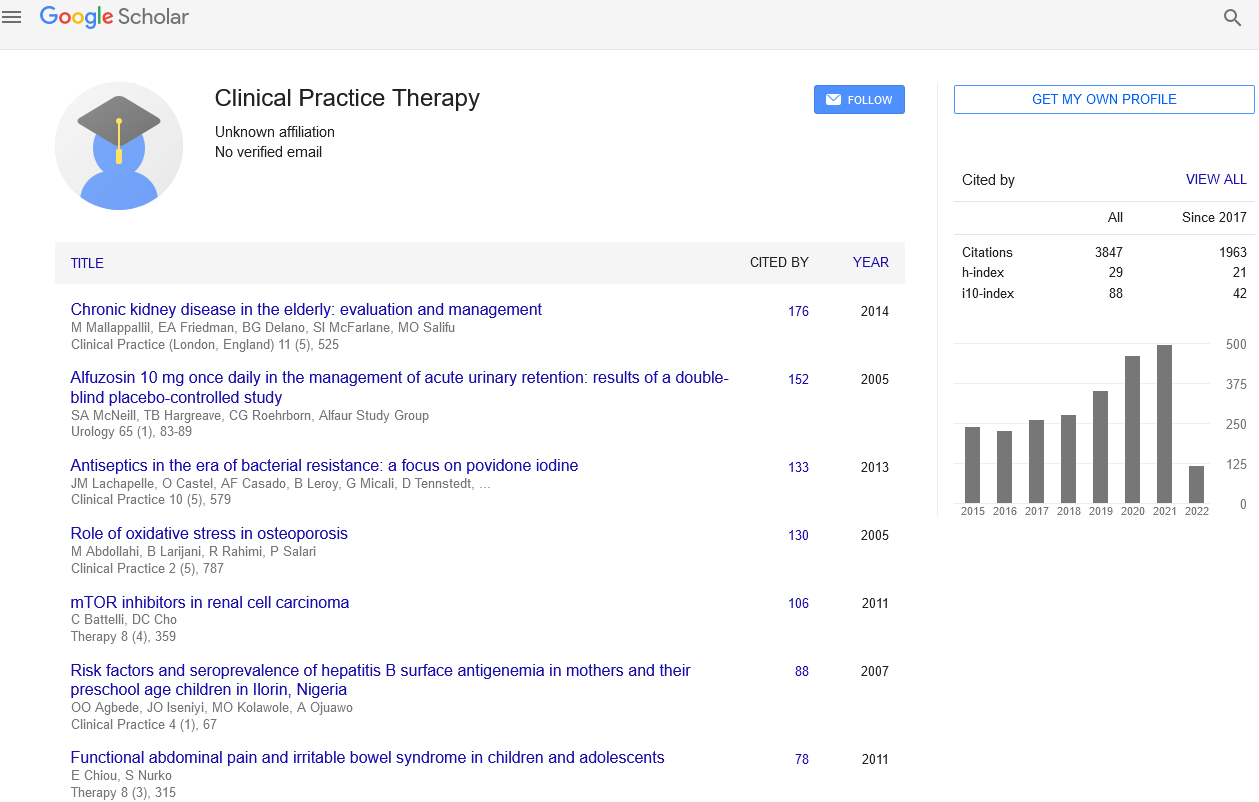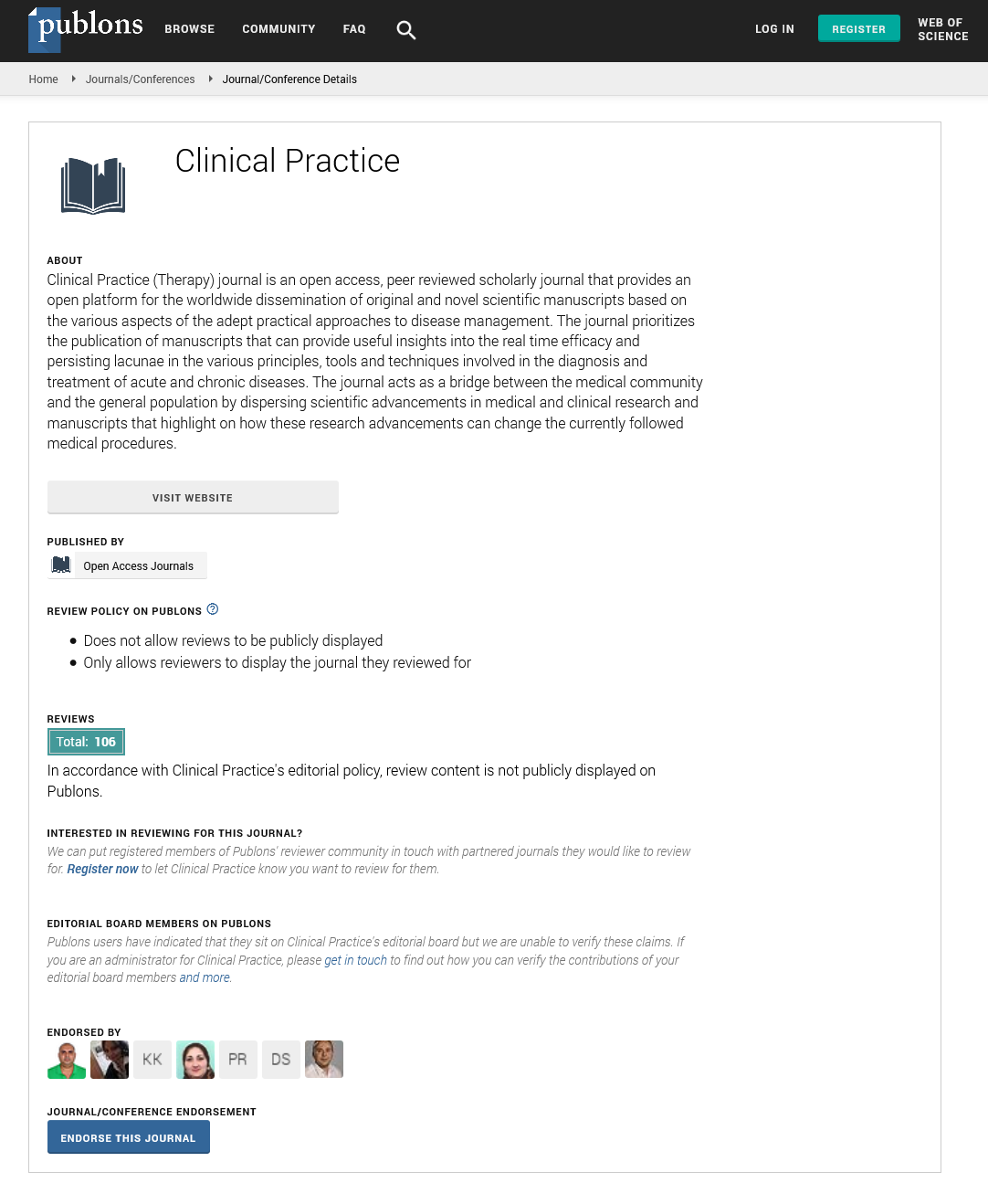Perspective - Clinical Practice (2025) Volume 22, Issue 1
The Impact of Dental Implant Macrodesign on Prosthesis Replacement Success
Apoorva Bushan Singhal*
Department of Intensive Care Unit of Mediclinic Parkview Hospital, UAE
- *Corresponding Author:
- Apoorva Bushan Singhal
Department of Intensive Care Unit of Mediclinic Parkview Hospital, UAE
E-mail: singhal@mediclinic.ae
Received: 01-Mar-2025, Manuscript No. fmcp- 25-158676; Editor assigned: 03-Mar-2025, Pre-QC No. fmcp-25-158676 (PQ); Reviewed: 17-Mar-2025, QC No. fmcp-25-158676; Revised: 21-Mar-2025, Manuscript No. fmcp- 25-158676 (R); Published: 28-Mar-2025, DOI: 10.37532/2044-9038.2025.22(1).1-3
Abstract
Dental implants have revolutionized the field of prosthetic dentistry, providing longlasting solutions for patients who have lost teeth. The success of dental implants, however, can be significantly influenced by their macrodesign. This opinion article explores the role of implant macrodesign in determining the long-term success and reliability of prosthesis replacement. By considering factors such as surface area, shape, threading, and material selection, we highlight how the macrodesign of dental implants impacts osseointegration, stability, and overall prosthetic outcomes. Further research into optimizing implant macrodesign could enhance patient outcomes and reduce complications in clinical practice.Keywords
Dental Implants • Macrodesign • Prosthesis Replacement • Osseointegration • Implant Shape • Surface Area • Stability • Prosthetic Dentistry
Introduction
The field of dental implantology has made tremendous strides over the last few decades, offering a highly effective solution for tooth loss. The success of dental implants in replacing lost teeth depends on a variety of factors, including the skill of the surgeon, the health of the patient, and the materials used in implant design. However, a critical and often overlooked factor in ensuring the long-term success of dental prostheses is the macrodesign of the implant itself. Dental implants are designed to function similarly to natural tooth roots, with a primary goal of achieving stable osseointegration — the process by which the implant fuses with the surrounding bone. The macrodesign of the implant, which includes the geometry, surface texture, and overall shape, plays a significant role in influencing this process. In this article, we examine the influence of dental implant macrodesign on prosthesis replacement success, with a focus on how these factors contribute to both immediate and long-term clinical outcomes [1-3].
Factors Influencing Implant Macrodesign
Implant shape and surface area:
The shape of the implant and the surface area it presents to the surrounding bone are crucial elements in achieving successful osseointegration. Implants with a larger surface area typically have better bone contact, leading to increased stability and enhanced healing. Various shapes, such as cylindrical, tapered, and conical designs, are chosen based on the specific needs of the patient and the location of implantation. Tapered implants, for instance, are often preferred in areas with limited bone height, while cylindrical implants may be more effective in regions with ample bone width.
Thread design and pitch:
The design of the threads on the implant plays an essential role in the success of prosthesis replacement. Threads are critical for distributing mechanical forces and improving the initial stability of the implant in the bone. The pitch (distance between the threads) and the depth of the threads impact the distribution of stress and strain, which can influence the healing process and long-term implant stability. Implants with a deeper thread design may offer better initial mechanical retention in the bone, but an improper pitch could potentially compromise the load distribution over time [4,5].
Material selection:
The material used to construct the implant also contributes to its macrodesign. Titanium and its alloys have long been the standard materials due to their excellent biocompatibility, durability, and resistance to corrosion. However, advancements in materials such as zirconia are gaining popularity, particularly in aesthetic applications where the visual appearance of the implant is paramount. Material choice impacts not only the strength and longevity of the implant but also its ability to integrate with the bone and maintain its structural integrity under functional loads.
Surface texture and coating:
In addition to the overall shape and design, the surface texture of the implant is a key factor in determining how well the implant integrates with the bone. Roughened or coated surfaces increase the surface area and promote faster and more effective osseointegration by facilitating better bone-to-implant contact. Coatings such as hydroxyapatite or bioactive glass may be applied to enhance the bonding between the implant and bone, further improving long-term success rates.
Clinical implications of implant macrodesign
Improved osseointegration:
A well-designed implant macrostructure enhances the potential for osseointegration. By optimizing the implant’s surface area, shape, and material properties, clinicians can achieve more rapid and predictable bone integration, leading to a more stable foundation for the prosthesis. The early success of osseointegration is crucial for ensuring that the implant remains securely anchored over time, minimizing the risk of implant failure or loosening [6,7].
Prosthetic functionality:
The stability of a dental implant influences the ability of the prosthetic tooth to function effectively. A well-integrated implant provides a solid foundation for the restoration, ensuring that the prosthesis can withstand normal chewing and biting forces without loosening or causing discomfort to the patient. Implant macrodesign directly affects the distribution of these forces, with certain designs being more effective in specific clinical scenarios.
Reduced risk of complications:
A properly designed implant macrostructure can minimize the risk of complications such as implant failure, peri-implantitis, or bone resorption. By improving the initial stability and long-term retention of the implant, a well-designed implant reduces the need for additional surgeries or interventions. Additionally, implant macrodesign can influence the healing process, reducing the likelihood of infection or other postoperative complications [8-10].
Customization for patient needs:
The ability to customize the macrodesign of dental implants based on individual patient needs allows for more personalized and successful treatment outcomes. For example, patients with limited bone density may benefit from implants with a tapered design or those with roughened surfaces to enhance bone attachment. A thoughtful approach to implant selection based on the patient’s anatomical and functional needs can lead to better overall results.
Conclusion
The macrodesign of dental implants plays an integral role in the success of prosthesis replacement. Factors such as implant shape, surface area, thread design, and material selection all contribute to the initial stability and long-term success of the implant. Optimizing these design elements improves osseointegration, reduces the risk of complications, and ensures that the prosthetic tooth remains functional and stable throughout its lifespan. As research in dental implantology continues to evolve, further refinements in macrodesign will likely lead to even better outcomes for patients seeking dental prostheses.
References
- Abolfazl Akbarzadeh. Liposome: Classification, Preparation, and Applications. Nanoscale Res Lett. 8, 102 (2013).
- Goyal M. Endovascular thrombectomy after large vessel ischaemic stroke: a meta- analysis of individual patient data from five randomised trials. Lancet. 22, 416-430 (2016).
- Hamdi Nsairat. Liposomes: Structure, Composition, Types, and Clinical Applications. Heliyon. 8, 9394 (2022).
- Abolfazl Akbarzadeh. Liposome: Classification, Preparation, and Applications. Nanoscale Res Lett. 8, 102 (2013).
- Goyal M. Endovascular thrombectomy after large vessel ischaemic stroke: a meta- analysis of individual patient data from five randomised trials. Lancet. 22, 416-430 (2016).
- Thorn, Caroline F. Doxorubicin Pathways: Pharmacodynamics and Adverse Effects. Pharmacogenet Genomics. 21, 440-446 (2011).
- Brunelli D, Polonelli T, Benini L. Ultra-low energy pest detection for smart agriculture. IEEE Sens J. 1-4 (2020).
- Crippen TL, Poole TL. Conjugative transfer of plasmid-located antibiotic resistance genes within the gastrointestinal tract of lesser mealworm larvae, Alphitobius diaperinius (Coleoptera: Tenebrionidae). Foodborne Pathog Dis. 7, 907-915 (2009).
- Dwyer, Claire. âHighway to Heavenâ: the creation of a multicultural, religious landscape in suburban Richmond, British Columbia. Soc Cult Geogr. 17, 667-693 (2016).
- Taniguchi S, Ryu J, Seki M. Long-term oral administration of glucosamine or chondroitin sulfate reduces destruction of cartilage and up-regulation of MMP-3 mRNA in a model of spontaneous osteoarthritis in Hartley guinea pigs. J Orthop Res. 30(5), 673-678 (2012).



